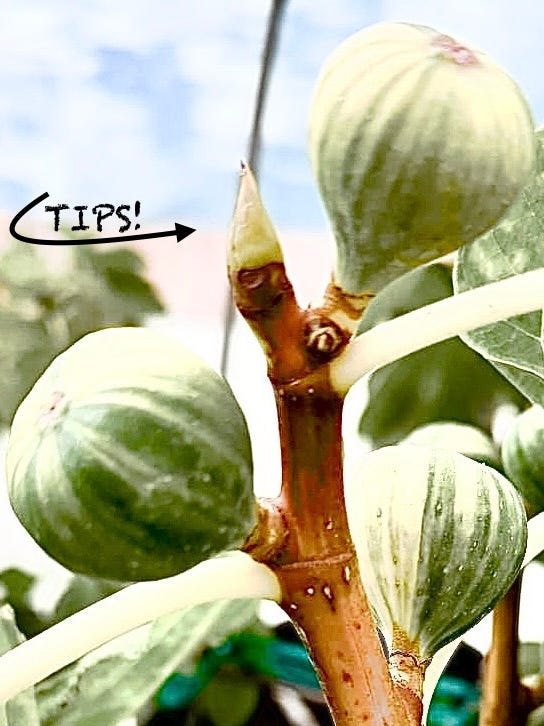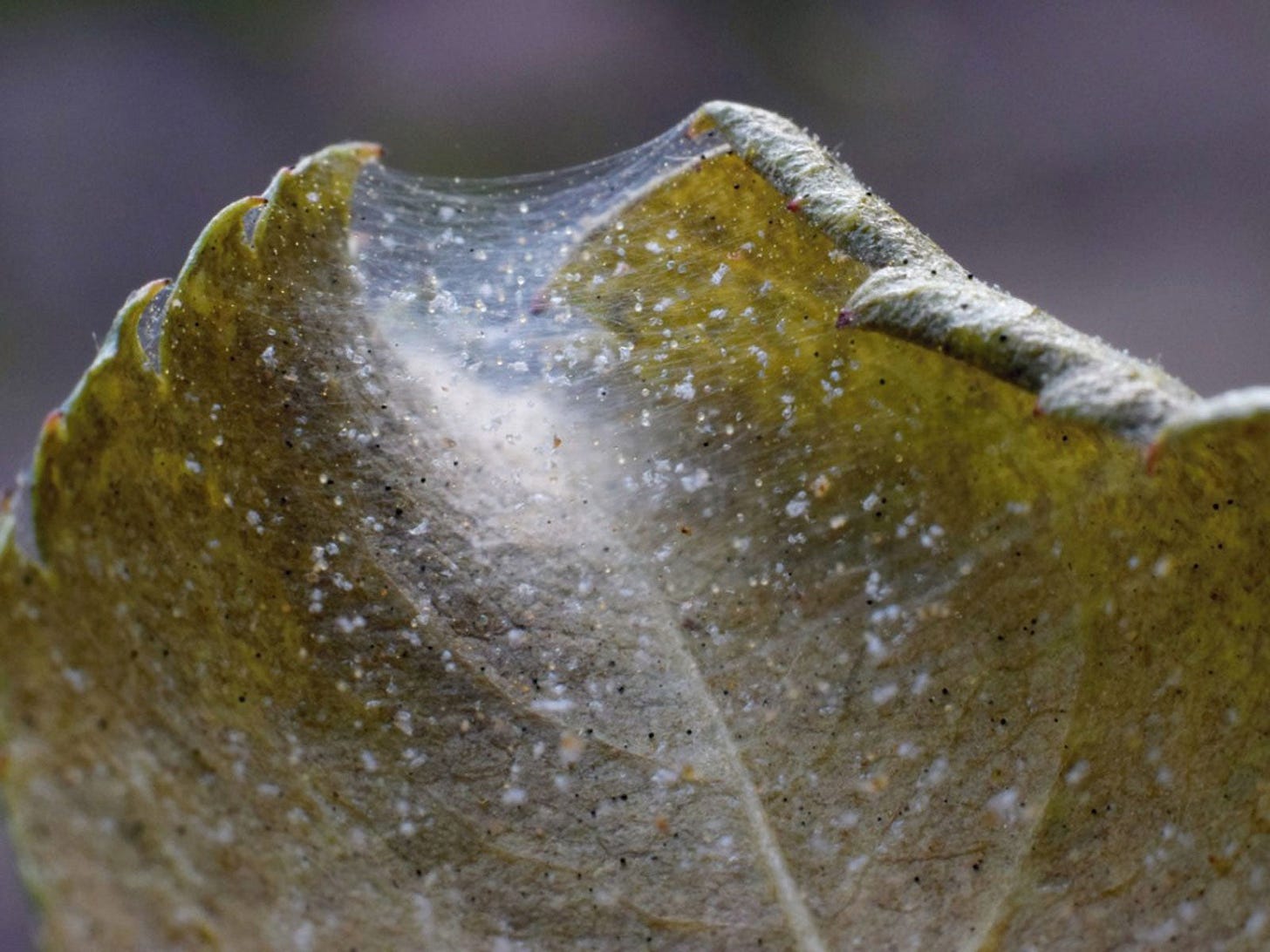👾 Fig bud mites can be a cause of round mottling spots on leaves that can resemble FMD or nutrient deficiency. These are typically more of a cosmetic issue than anything in my opinion. The main concern with them is that they are reported to transmit FMV (Fig Mosaic Virus) from one plant to another, however, I have different feelings on the impact of FMV and so do not feel them to be any major threat.
Injury from fig mite sucking can cause bronzing or russeting, and circular chlorosis type spots on leaves. They can be seen with a minimum magnification of a 20X hand lens to verify their presence. Once the cutting seems fairly rooted & growing, mites can be treated with sulfur, neem oil, or other treatments if desired. Be careful of light exposure after treatment. Sulfur and neem oil should not be used together, and at least two weeks should pass before using the other. Be careful to use a weaker concentration on new plants as the treatment can cause burning on baby plants, another reason why I usually wait.
I only treat if the damage seems severe & isn’t going away on its own. Generally, the healthier the plant, the less insect issue. It’s very interesting to look into Dr. Thomas Dykstra and his research on brix being an indicator in plants for certain types of insect issues. So, I try to boost health over resorting to pesticides, even natural ones, when possible.
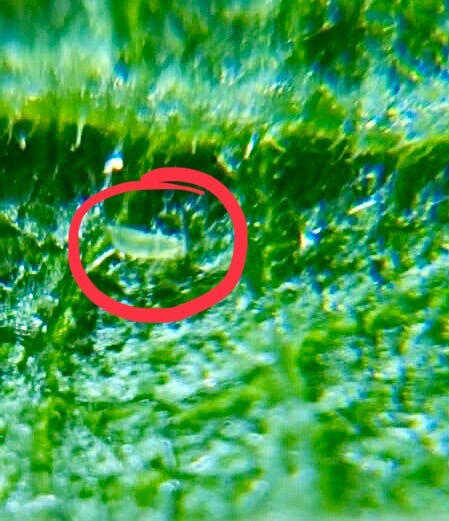
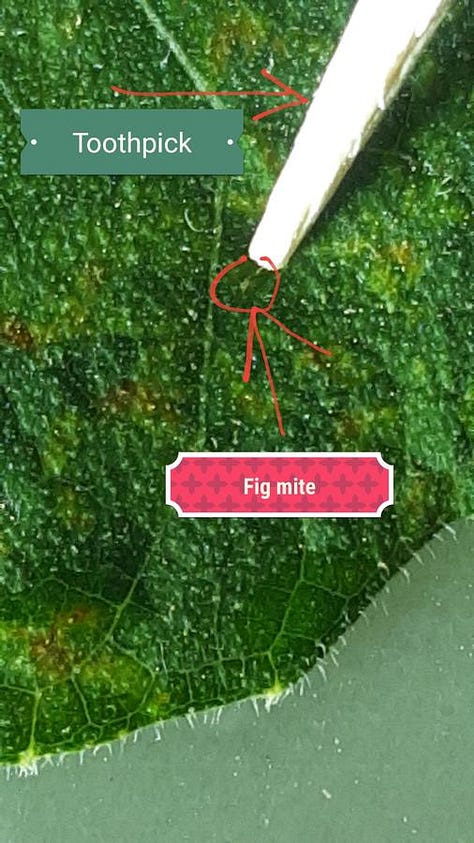
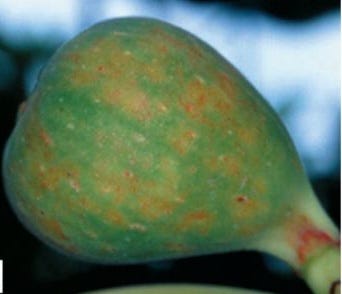
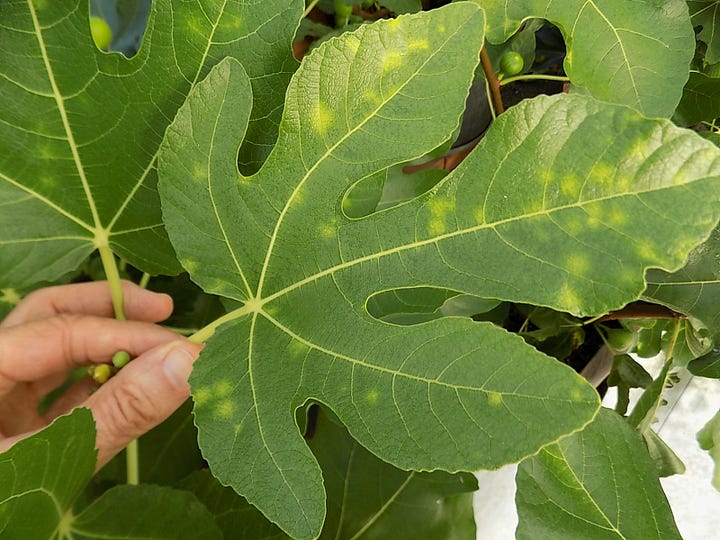
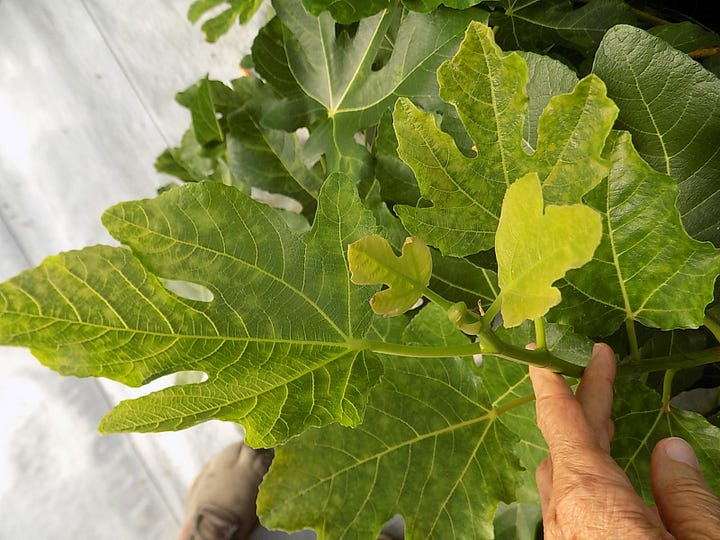
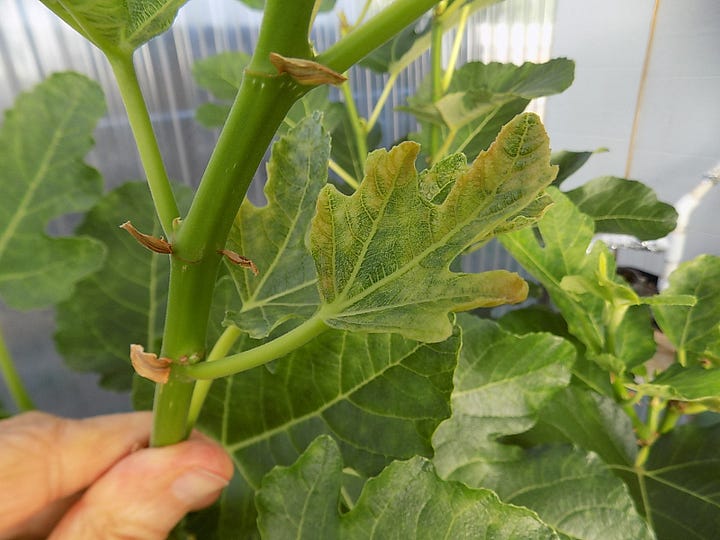
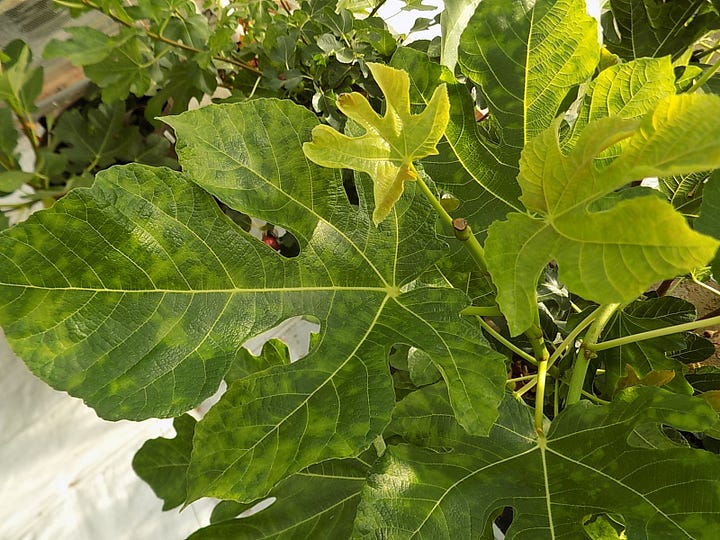
👾 Spider mites can cause a sticky web formation on leaves, brown streaking, and eventually the leaves die & fall off. They also will spread to other trees so it is best to take care of them right away so as not to stall growth. I treat with neem oil or enzymatic soaps, such as Tweetmint. Avoid light exposure after spraying for 12 hours give or take. They are generally not an issue once outdoors.
👾 Fungus gnats— See below section for prevention. It is best to take care of the problem when small because they can quickly overtake your rooting setup. Mosquito bits, Gnatrol, or neem meal water have been effective treatments. Generally not an issue once outdoors.
👾 Ants will sometimes want to infest pots lower to the floor if you have an ant issue. I use Terro borax baits on a plant stake with good effectiveness for this. Diatomaceous earth powder can also be used as a physical barrier.
How I Control Fungus Gnats
I do not use organic matter in my rooting mix. This alone cuts down on the bulk of the problem. I also use as “fresh” of peat or coco coir as possible, meaning I try to get newer bags and not bags that have been sitting in a yard for a length of time.
I have a few carnivorous plants in my rooting setup. I prefer Pinguiculas, aka Butterworts. They are easy to get online and easy to take care of.
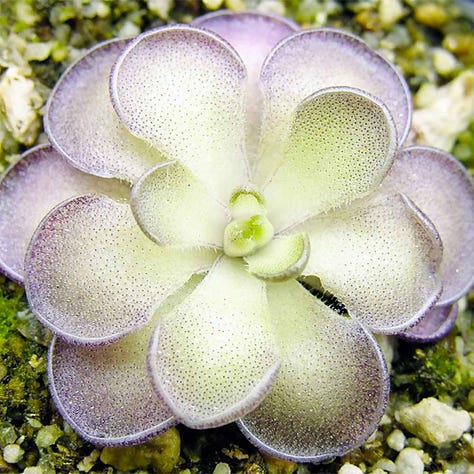
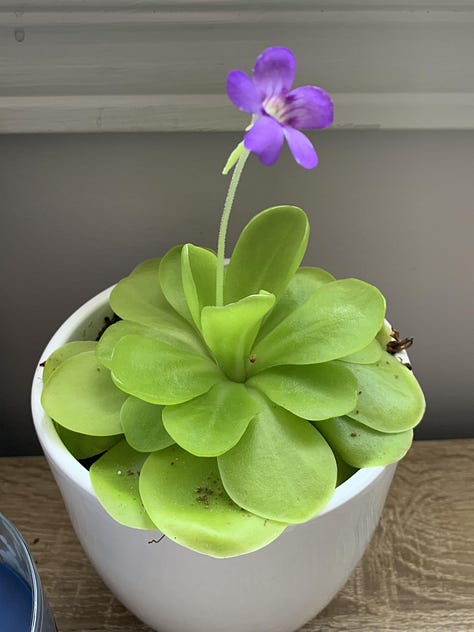
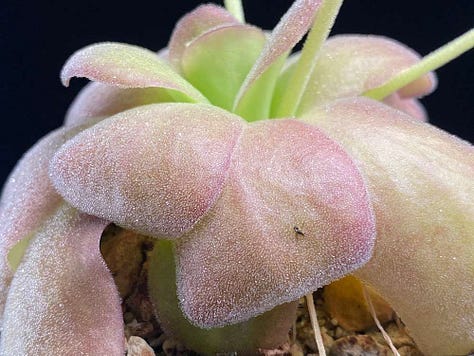
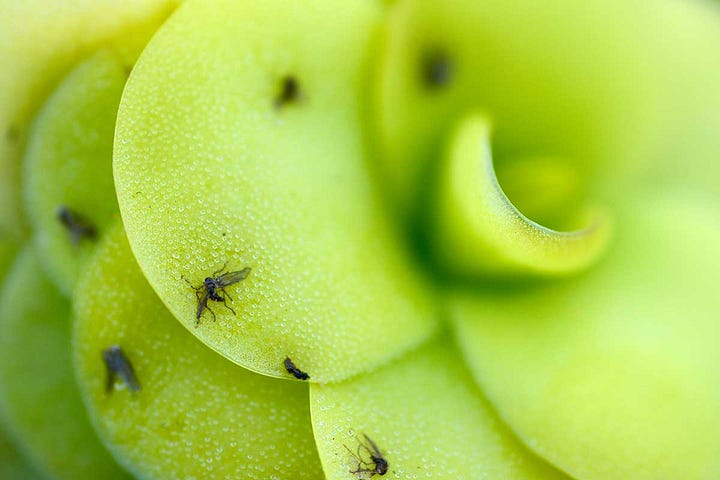
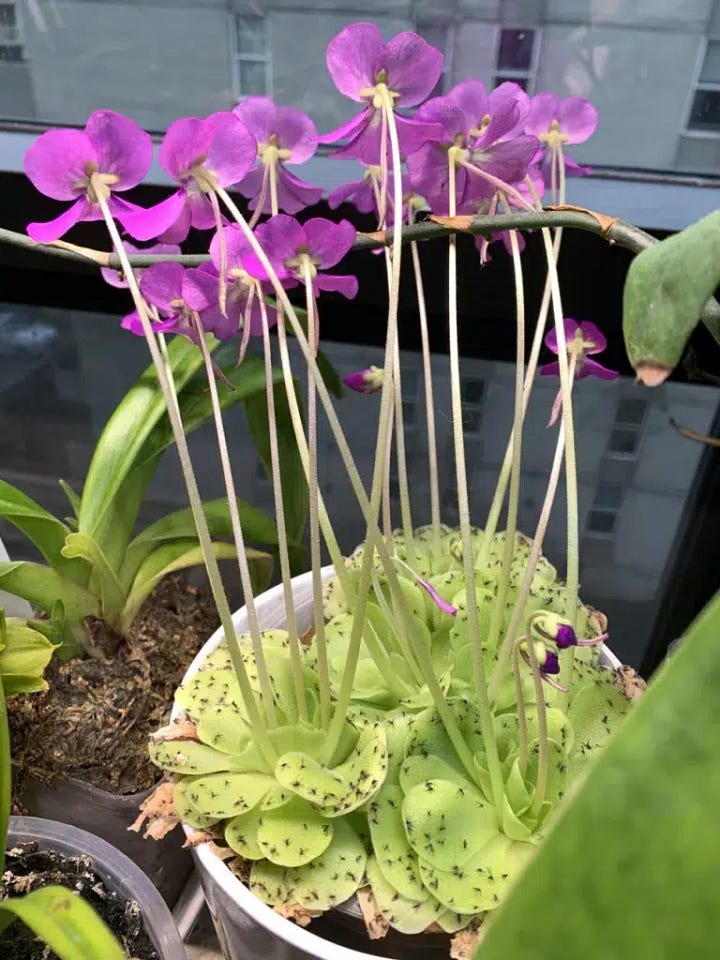
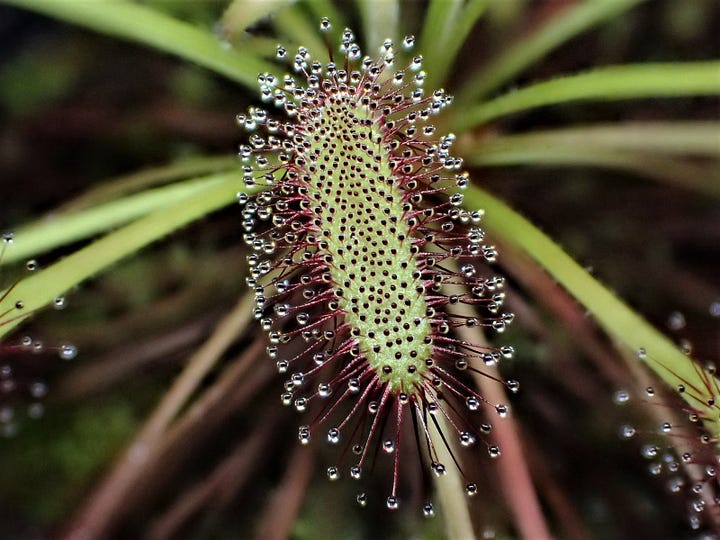
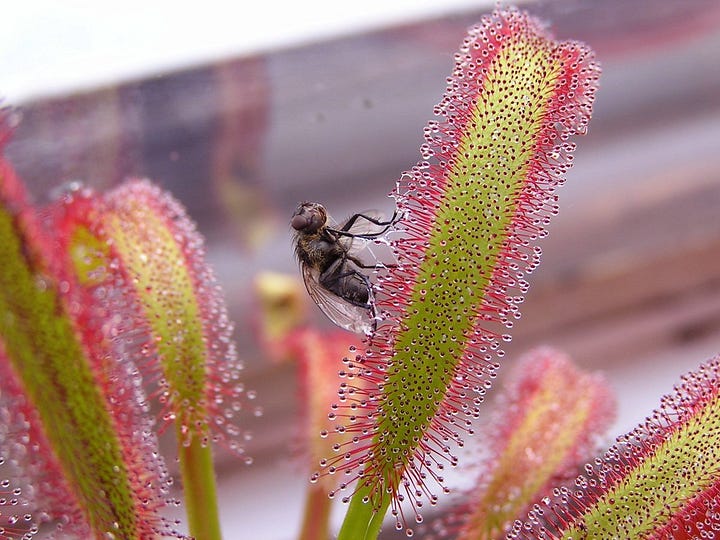
3. Little bug zappers can also be placed in your rooting setup.
OPTIONAL: Some also will use a fan to create a breeze over their rooting setup. This makes it more challenging for fungus gnats to fly over the area. Just be careful it does not lower the temperature too much.
With the above steps, I have never needed to use any pesticides, mosquito bits, or Gnatrol even with hundreds of cuttings rooting at once.
Fungus gnats are drawn to decomposing organic matter and are part of the cycle for promoting the fungus that breaks it down and that they eat. So, keeping things aerated, and not using the organic materials they can consume is your best bet. Using LABS (Lactic Acid Bacteria Serum) can also help to keep things aerobic and fight the fungus that draws them.



